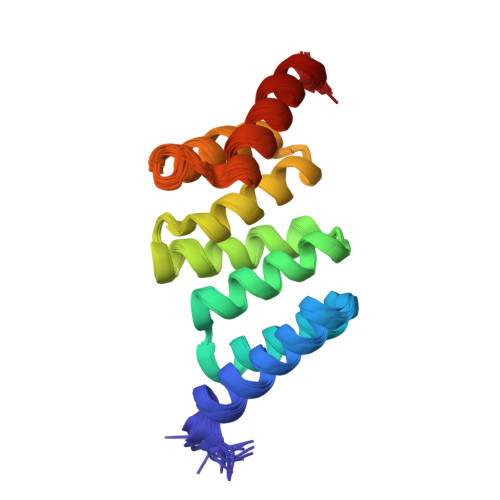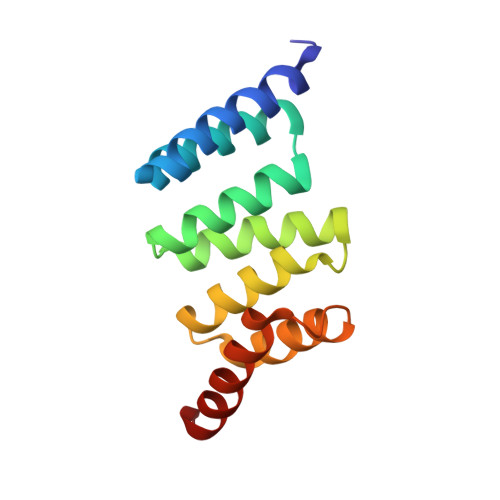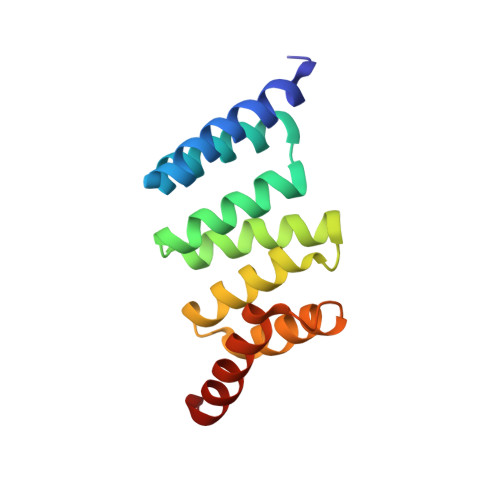Optimizing the First TPR Domain of the Human SPAG1 Protein Provides Insight into the HSP70 and HSP90 Binding Properties.
Dermouche, S., Chagot, M.E., Manival, X., Quinternet, M.(2021) Biochemistry 60: 2349-2363
- PubMed: 33739091
- DOI: https://doi.org/10.1021/acs.biochem.1c00052
- Primary Citation of Related Structures:
7BEV - PubMed Abstract:
Tetratricopeptide repeat domains, or TPR domains, are protein domains that mediate protein:protein interaction. As they allow contacts between proteins, they are of particular interest in transient steps of the assembly process of macromolecular complexes, such as the ribosome or the dynein arms. In this study, we focused on the first TPR domain of the human SPAG1 protein. SPAG1 is a multidomain protein that is important for ciliogenesis whose known mutations are linked to primary ciliary dyskinesia syndrome. It can interact with the chaperones RUVBL1/2, HSP70, and HSP90. Using protein sequence optimization in combination with structural and biophysical approaches, we analyzed, with atomistic precision, how the C-terminal tails of HSPs bind a variant form of SPAG1-TPR1 that mimics the wild-type domain. We discuss our results with regard to other complex three-dimensional structures with the aim of highlighting the motifs in the TPR sequences that could drive the positioning of the HSP peptides. These data could be important for the druggability of TPR regulators.
Organizational Affiliation:
Université de Lorraine, CNRS, IMoPA, F-54000 Nancy, France.


















